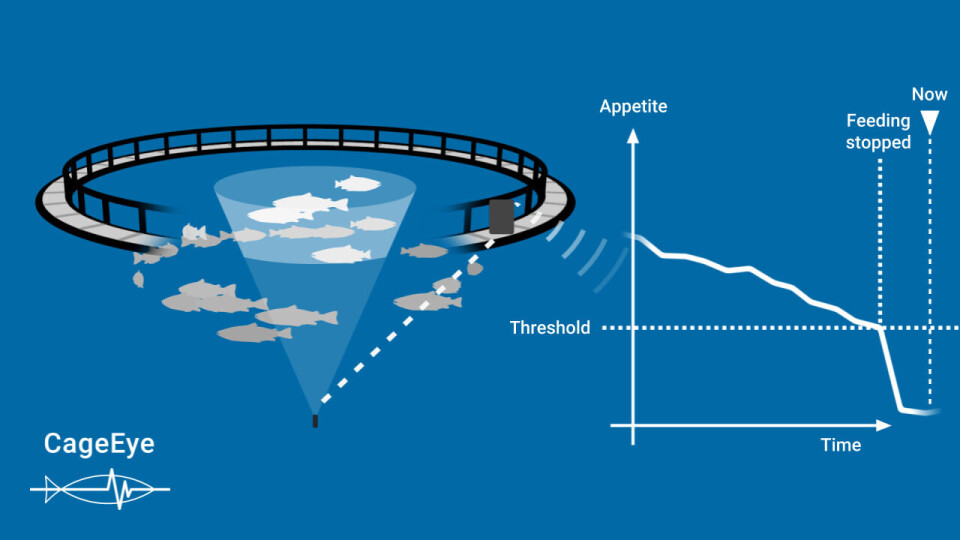
Cash boost for acoustic fish feed system developer
Sustainable aquaculture investment fund Aqua-Spark is putting an unspecified amount of money into Norwegian company CageEye, which uses acoustic technology and machine learning to optimise salmon feeding.
CageEye will use the money to invest in research and development, grow its team and expand its customer support network, according to a press release from the companies, who say that although the salmon industry has some of aquaculture’s most advanced feeding practices there is still significant potential for improvement.
“Current market practice is to use optical underwater cameras, which cover a very limited field of view and lead to highly subjective decisions,” said CageEye chief executive Bendik S Søvegjarto.
“Our acoustical system covers the whole feeding zone and makes consistent decisions meal after meal, which improve as we continue to train our models on growing datasets of salmon behaviour and accompanying feed operator decisions.”
Consistent decisions
“Improving feed and addressing feed loss have been a priority within our portfolio from Aqua-Spark’s inception, as it’s the greatest challenge for any fish farm,” said Mike Velings and Amy Novogratz, co-founders of Aqua-Spark.
“With CageEye, we’re able to support improvements in cage farm management, including how feed is distributed. Beyond this, we’re excited to see how their behaviour assessment technology will impact other areas of farming as the company matures.”
The funding round raises the amount CageEye has raised in funding and grants to €5.3 million since 2016, when it first began to offer its products for commercial use. This includes a recent investment from Internet of Things investor Breed Reply.
Appetite-controlled feeding
The company has also secured a total of €2.5 million in funding for 2019.
CageEye says its easy-to-install solution delivers appetite-controlled feeding which can substantially reduce the cost of feed waste and increase growth.
The system, developed in collaboration with the Norwegian Institute of Marine Research, uses acoustic data and advanced analytics to detect when the fish are hungry or full, and is a tool to improve feeding and growth while reducing waste.





















































